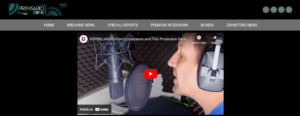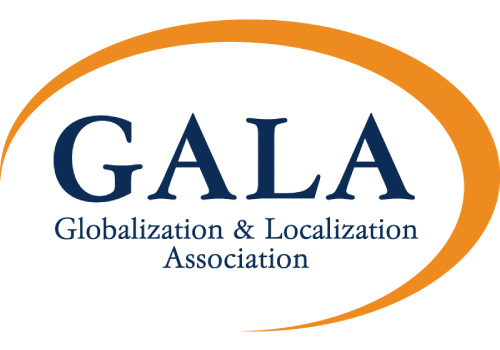It would be hard for anyone living on this planet not to have seen or experienced in one way or another Disney’s box office hit “Frozen”, the highest grossing animated film ever! This year, Sandra Bullock and her minions have dominated the box office in Universal and Illumination’s animated movie, “The Minions”.
Since Pixar Animation Studios released “Toy Story” in 1995, the first entirely computer-generated animated feature, animation movies have taken the world by storm. Apart from being highly innovative with incredible images, “Toy Story” had a good storyline, great dialogue, and fantastic voice acting which conveyed the unique personality of each character to perfection. Proof that one of the key factors in all animations lies in the dubbing and voice acting, which can essentially make or break the success of the film. As such, it’s not surprising that many of these animated movies feature the voices of leading Hollywood actors who earn big to depict the main characters.
It’s hard to believe that My Old Kentucky Home, a short animation film released in 1926, was the first film to have synchronised sound with animated dialogue – that’s almost ninety years ago! Since then, many animation movies have made it to our international screens with content targeted at children having pioneered the popularity of dubbed animations for the most part. At Haymillian, we work with a number of clients in translating and dubbing media content, and of late, we’ve witnessed a growing rise in the number of animated programmes that we are being asked to dub. The traditional animation genres combined with children edutainment has brought even more dubbed content to our TV screens.
Children’s Edutainment & the Rise of Animation Dubbing
The long running children’s TV series, Sesame Street, was the first preschool educational television programme to base its contents and production values on laboratory and formative research; it first hit our TV screens in 1969. Over the years, and especially in the last decade or so, the rise of children’s edutainment programmes, such as VIPO the Flying Dog, Dora the Explorer, Barney and Friends has given an additional boost to the international dubbing industry. Moreover, we have seen an increase in the availability of foreign animations dubbed into English across high profile networks.
Some countries like France, Germany and Italy almost exclusively dub and have a thriving dubbing industry where the viewers prefer to watch Hollywood content dubbed in their own language. It is not that they don’t particularly understand English, but they enjoy it more in their native language. They even have their own dedicated voice actors who are the only voices that represent Hollywood stars such as Sean Connery, Bruce Willis or Cameron Diaz.
Independent of this preference, most countries require that any content addressed to viewers up to 12 years old be dubbed, or to at least present a choice of dubbed and subtitled content to choose from. For this audience in particular, subtitling doesn’t work unless an adult is beside the child to explain to them what’s happening. In this case, dubbing is a logical solution that allows children to fully enjoy their film, independently.
A Standard Dubbing Process for Animation
Dubbed content gives audiences access to some of the best media from around the world in a language they understand while offering more variety. However, dubbing is a difficult job and comes with many challenges. For the dubbing translator, timing of sentence length and the number of syllables used is of paramount importance so that the dialogue matches the onscreen lip movements. However, no two languages are the same and where one syllable is used in English; its translation into French may require two or three syllables. This is where the dubbing translator needs to be skilled and creative without losing the message or storyline of the original creation.
In animation dubbing, it can be extremely tricky to find the right voice actor that will animate each character, convey its personality and create the illusion that the character is indeed talking! Essentially, what we are doing is recreating all aspects of the original version of the film into a foreign language.
Translation – The first step of any foreign dubbing process lies in the translation. During this stage, the translators work on the text and the message to create the foreign version. This is more of an art than merely a direct translation process. It can be compared with translating a book.
Adaptation – Once the translation finished, the director and his team of translators start adapting the material for recording. This may include from matching the labials to editing for optimum text length.
Casting – Most of the time the casting of the actors is carried out in parallel to the adaptation process. Depending on the budget, the dubbing studio may test actors from its own database or perform a larger casting and tests. If your animation has a celebrity voice with an approved voice talent in your target territory, then your studio will have to commission their services separately.
Directing and recording – When the adaptation and the casting are approved, here is when really the fun begins! Actors recreating their character under the guidance of the director and recording of the lines. This is a very laborious and difficult process, as apart from acting, they must be familiar with lip-syncing techniques. Depending on the country this can be rythmo band, sound sections, beeps, etc.
Mixing – This is the final step of the dubbing process. Depending on the requirements of the client, the studio may need to do full video, M&E and audio mix, including graphics edition or M&E and audio mix. This is where the skills of the sound engineers working on the project are put to test.
Once we are completely satisfied of the outcome, the foreign adaptation is delivered to our client.
Worldwide releases are now a reality for major Hollywood productions and popular series where anyone, in any country, can view the same content, at the same time. Global release cycles, create the need to localise content to reach a global audience within extremely tight launch windows. These short time frames within which original content can be localised pre-worldwide launch brings huge technical and creative challenges. If you want to find out how Haymillian, can create the foreign language version of your content, get in touch with us today.







